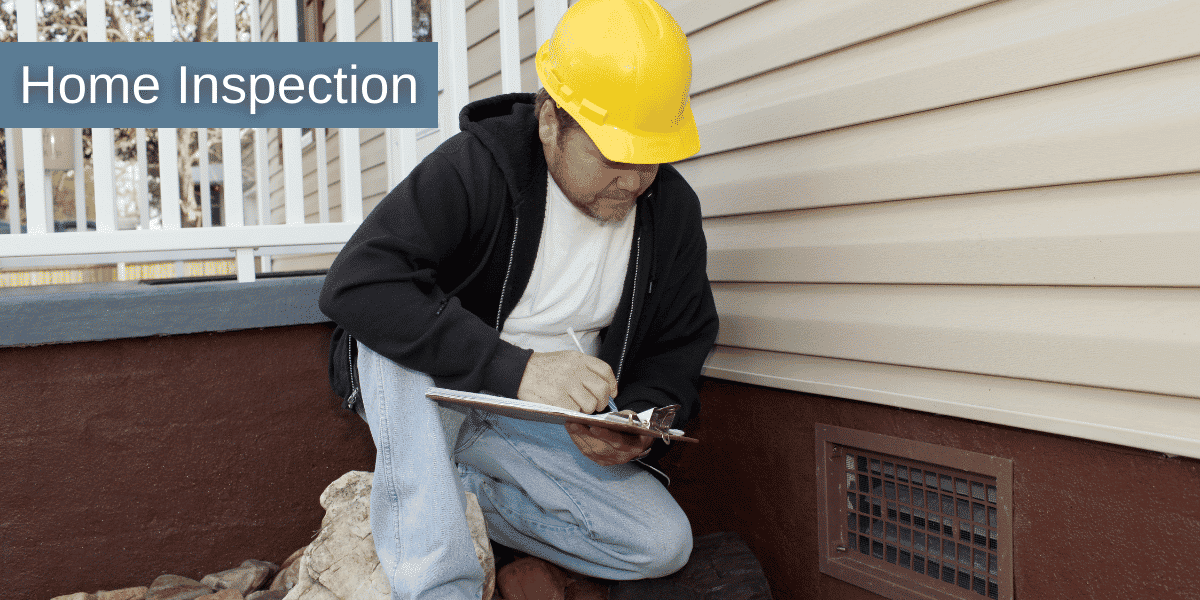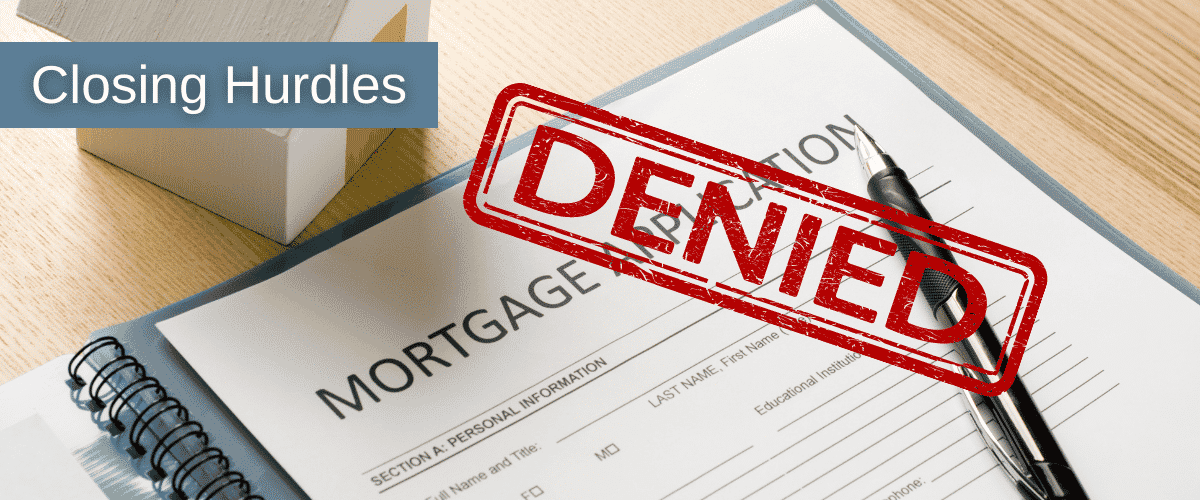Many home sellers want a stress-free sale where they can simply list their house and find qualified buyers quickly. Then, they can hand over the keys. It would be so easy! Listing your home involves many moving parts. Some you can control and some are beyond your control.
Geography can have an impact on how long your house stays on the market and how much you can ask for the property. If there is a lot of competition and low inventory, you will likely sell your house faster and get a higher price. In contrast, homeowners who have seen a decline in home sales will have to be more aggressive to find the right buyer.
Due to the extraordinary growth of the housing market after the coronavirus pandemic, there has been an increase in prices and bidding wars and very low inventory levels over the past two years. Nevertheless, prices will begin to stabilize as mortgage rates rise.
Here are the 18 steps to listing your home for sale:
1. Identify your motivations for selling
Take the time to understand your reasons for selling. Depending on the circumstances, it can be difficult, so make sure you are certain that you want to sell.
Your finances are important. Call your loan servicer and discuss the remaining mortgage balance. This is the first step in understanding how much equity your home will have when it’s sold. This figure will help you budget for the improvements you need before you list or plan for your next home purchase.
You should make a list. List your essentials and deal-breakers. How long do you have to move? How much do you have to spend on home improvements before listing your home? What is the minimum price you are willing to accept for a sale?
2. Find the best time to list in your area
Knowing the market conditions in your area can help you determine the best time to list. You might be able to wait for a seller market. This is when more people are looking for homes than homes are available. This gives sellers more negotiation power, which can lead to higher prices.
The first half of May is traditionally the best month to sell your house. This is because it allows you to maximize your profits while minimizing the time on the market. According to Zillow research, homes listed for sale during this window sold six days earlier than the average and for $1600 more. 2020 however, changed the rules. The prime selling season extended well into the off-season.
The selling window may vary depending on the local real estate market. Do your own research to find out when is the best month for listing your home in your area.
3. You should establish a time frame for the sale of your home
A major undertaking, selling a house can take up to four months from beginning to end. It may take longer depending on the local market and availability of inventory.
Consider having a pre-sale inspection done at least two to three months prior to listing your home. To identify potential problems, such as structural or mechanical problems that may need to be addressed in order to sell the property, a pre-sale home inspection is advisable. You should allow enough time for repairs.
Start staging about a month before you list your house. Also, do some deep cleaning to prepare for the photos.
Here is a list of things you should do before listing your home:
- Interview real estate agents
- You can declutter and possibly move excess items to a storage facility
- To identify potential problems, you can request an optional inspection of your home
- If repairs are necessary, schedule them
- Deep cleaning
- You can stage the house
- Professional photos can be taken

4. An experienced listing agent is recommended
It’s easy to look up realtors’ sales history, professional designations and other information online so that you can make the right choice when choosing who to work with. You can check out the online profiles of agents to see how long they have been in the business, how many transactions they have made and any designations they might hold. You should pay attention to where and how they market their listings. Also, professional photos are a must.
Jorge Guerra, Global Liaison of the National Association of Realtors, says that any designation they have earned is a big plus because it shows they’ve spent the time to study a niche.
Some homeowners may be tempted to sell their house without the assistance of an agent in order to save money on commissions. This is called “for sale by owner” or FSBO. However, studies show that since the buyer is aware the seller is not using a realtor and because the owner is not an experienced real estate professional, FSBO homes usually net a smaller profit for home sellers than they would receive if they hired a realtor.
An experienced listing agent can do a lot to earn their fee. They can market your home to as many people as possible and help you negotiate for the best price. You will need them to manage all aspects of the sale, including marketing, reviewing offers, negotiation, and closing.
5. Your home should be priced competitively
It can be difficult to find the right price when listing your home, but it is essential in a successful sale. One of the most common mistakes that sellers make is pricing their home too high in hopes of making more on the sale. Accurately priced homes are more likely to sell quickly. Zillow research shows that 57 percent sell homes at or above their listing price when they receive an offer within the first week. This drops to 50% the second week of the market and tends downwards as the weeks progress.
You can sell your house quickly if you use all of the tools available to you.
Use comps to decide on price
Comparables (also known as “comps”) are records of homes that have been sold and the sale prices. It is important to ensure that the comparables you use for reference are in the same area and size as your own home.
An appraiser can cost anywhere from $300 to $700. But it may be worth it if it helps you sell your home quickly and for an appropriate price.
Trust your agent. Your agent should have a good knowledge of the local home values. This will make them a great resource to help you determine the best listing price. They can also help you choose the right pricing strategy and possibly even start a bidding war.

6. Get a pre-sale home inspection
A pre-sale inspection of your home is an optional but a worthwhile upfront investment. An inspection report will help you identify structural and mechanical issues before you sell your house. Although it may be expensive, you will know in advance any issues buyers might flag during their inspection.
Sellers might be able speed up the sale process by being a step ahead of the buyer and doing repairs along with other home preparation work. It should be ready for sale by the time it hits the market.
7. Spend your money wisely and avoid unnecessary upgrades
You should ensure that you have a high return on your investment if you are going to spend money on expensive upgrades. If you are not able to make a profit or will lose money, it doesn’t make financial sense to replace granite countertops. These improvements might not be necessary to sell your house for top dollar, especially if there is low inventory in your area.
This is where a professional real estate agent can be of great assistance. These agents often have a good idea of what the local population wants and can help plan improvements accordingly. It doesn’t make financial sense to add skylights or steam showers if local shoppers don’t want them. A new coat of neutral paint, new carpet, and a cleaned-up landscape can make a big first impression.
The best return on investment is generally in the kitchen and bathroom. You might be able simply to replace your doors and hardware if you have an older cabinetry. You can easily swap your standard kitchen cabinet doors for shaker-style ones in a weekend.
8. Stage your house before listing
You should prepare your home for sale by organizing your furniture and decorating it in a way that is appealing to as many potential buyers as possible.
Home staging is a process that can take many forms and require different levels of effort. Here are some key tips.
Depersonalize, declutter, and clean. Too many items in a room can make a home feel small and cluttered. Too many personal items, such as family photos, can make buyers feel uncomfortable about living in their home.
Choose the right staging plan for you. There are many options available depending on your budget, time frame, and how important staging is in your area. While some staging can be done by the homeowner, larger projects require professional assistance.
You can put away your pets’ and children’s belongings. Many buyers are pet parents or young kids. However, they would like to visualize their own families in the house. Repair pet damage, take away pets’ belongings, and put away kids’ items like highchairs, gates, and piles of clothes.

9. Professional photos
Your agent can arrange for a photographer to take marketing photos of your house. It is crucial to have high-quality photos. This will make a difference in whether your listing sells quickly or languishes.
Many real estate agents include professional photography and virtual tours in their range of services. You might consider hiring a photographer on your own if they don’t offer these services. Professional photography fees will vary depending on the size and location of your property, as well as how long it takes to photograph the property.
Professional photographers with strong portfolios know how to make rooms look bigger, brighter, and more appealing. They can do the same for your lawn and outdoor spaces.
10. Listing your home on the market
At this stage, your real estate agent can list your home on the MLS for your area. This will also populate your home on hundreds of other websites that show homes for sale. Now you need to make sure that your home is ready for potential buyers at all times.
These are some tips to help you get your home ready for the market and attract buyers so that you can sell quickly.
The online appeal of your home is key
Although curb appeal is something you’re familiar with, professionals now believe that online appeal is even more important. Your home’s first exposure is online. Your web presentation is what will decide if someone calls to make an appointment or clicks on the next listing.
It should be staged and kept clean for showings
While we already covered staging, it’s worth noting that it is not just done for the photos. You must keep everything in its place for the duration of the sales process. You never know when someone is going to want to see the house.
Keeping the home clean is even more important. You don’t want those viewing your home to be focused on the dust and cobwebs instead of the amazing features that can help sell the house.
Don’t be at the house
When potential buyers visit your home, make yourself scarce. Allow them to imagine themselves in your space without the distraction of talking to you. Buyers are usually accompanied by their agent to view your house. Your agent can also be asked to attend showings, although this is not common.
Buyers can be hesitant about expressing their opinions when they see the homeowner lurking. It could prevent them from considering your home as an option.
11. Examine and negotiate offers
Once your house is officially on the market and potential buyers have seen it, the offers should start to come in. Your real estate agent is the best source of advice and support. Buyers may offer more than the asking price if you’re in a seller’s market and far below if the opposite is true. If sales in your area are slow and you don’t receive many offers, it may be worth negotiating.
You have three options when you are offered a deal: accept the offer as is, make a counteroffer, or simply decline the offer altogether.
A counteroffer is a good way to respond to an offer and negotiate terms and price. Always make counter offers in writing. Buyers should respond within 48 hours. If necessary, you can offer credit for carpet and paint or sweeten the deal by offering to include certain appliances.
You might feel tempted to choose the highest offer if you are lucky enough to be offered multiple offers . But first, you should also look at the other aspects of this offer:
- Form of payment (cash or financing)
- Types of financing
- Amount of down payment
- Contingencies
- Requests for credit or personal property
- Proposed closing date
If a buyer relies on lender financing, they must appraise the property. The deal may fall apart if there is a difference between the appraised value and the purchase price.
12. Accept the offer and begin the closing process
There are many steps to take after a buyer accepts an offer. Let’s take a look at each one to see what you can expect.
Appraisal of the property
Your property will serve as collateral for the buyer’s loan. Their lender will also want to ensure that the home is valued at the asking price.
The appraisal will be ordered by the buyer’s loan officer. (The buyer pays for it). The appraiser will contact you directly to let them know when and where they will be arriving at your property. They take about 30 minutes and you don’t need to worry about cleaning up beforehand.
Home inspection
Buyers can decide whether to have the home inspected ift an inspection contingency was included. Depending on the outcome of their inspection report, they might ask for items to be repaired or negotiate the price.
A home inspection is one of the best things to do when you are listing your home. It can convince buyers that they don’t have to spend more money on an inspection.
Allow buyer contingencies
A home seller’s biggest challenge is to get a buyer to release all contingencies.
Why?
The buyer’s deposit will be at risk once all contingencies have been released.
A contingency release form will be sent to the seller’s agent by the buyer’s agent. It states that the buyer agrees to all contingencies.

13. Keep an eye out for the closing hurdles
The biggest obstacle to home-selling is getting a great offer. However, once you have signed the contract, it doesn’t mean that the problems are over. These are some potential problems that could arise between accepting an offer and closing.
Bad home inspection report
A buyer may conduct a home inspection on your house and find major problems. If these issues are discovered, the buyer might walk away. Be prepared to negotiate, regardless of whether the inspection uncovers small fixes or major problems.
Low home appraisal
A lender will usually order an appraisal to ensure that the property is worth the loan amount. The buyer must pay the difference in cash or the house will be repossessed if the property’s value falls below the loan amount.
Failure to finance
It is possible for your buyer’s financing to fail during the underwriting process. It could be due to new debt, missed payments on credit cards, or changes in employment that make the bank feel there is too much risk in financing your home.
14. Avoid unexpected seller closing costs
Both the seller and homebuyer have closing expenses. The total commission paid to the real estate agents is usually between 5 and 6 percent of the sale price.
Other costs that sellers often pay include:
- Transfer tax Government
- Recording fees
- Outstanding liens
- Attorney fees
If the seller has agreed to pay any of the buyer’s closing costs or repairs credits, that will need to be paid as well. The closing agent or your real estate agent will provide you with a detailed list of the costs that you’ll have to pay at closing. The buyer usually pays the bulk of closing costs (usually between 2 and 4 percent of the sale price), but you may also have to pay fees.
15. Assess the tax implications
Most home sellers will not owe any taxes on the profits they make from selling their primary residence. For example, if your home has been owned for at least two years, you probably won’t owe any taxes on the profit. Of course, if there is no profit, then there is nothing to pay taxes on anyway.
16. Collect all necessary documentation to close the deal
To properly document a sale of a house, there is a lot of paperwork. It will make things easier to organize it all in one place. The following are the most important documents that you will need:
- Original purchase contract for your home
- Property survey Certificate of occupancy , certificates of compliance with local codes
- Mortgage documents
- Tax records
- Appraisal of your home
- Homeowners Insurance
- If you have a home inspection report

17. Get out of the house
You should budget for your moving costs. Moving is costly and time-consuming, no matter where you are moving. A local move that is less than 100 miles can be serviced by two movers with a truck and costs $80 -100 per hour.
Make sure to prepare for any unexpected costs on your move day.
Timing is everything: Moving is expensive. However, 61% of sellers buy within 12 months. Temporary housing might be an option if you are buying and selling at the same time. This will allow you to avoid worrying about timing and purchasing.
You should be ready to move fast: In 2018, the average time to sell a house is between 65-93 days from listing your home to closing. It is important that you are out of your home by the closing date.
18. Fulfill all closing responsibilities
You, as the seller, are responsible for certain legal documents and processes when closing on your home.
Completion of repairs and certifications
You may be required to make repairs as part of your post-inspection negotiations. You should also complete any inspections or certifications that the buyers request (and you agree to), such as a sewer line inspection and roof condition certification.
Submit property disclosures
In most states, sellers are required to disclose any known defects and issues that could affect the safety or value of the home. This is called a property disclosure. These issues must be disclosed in writing before closing. The specific rules and procedures will vary depending on where you live.
Expected closing costs
Selling your house can be costly. Make sure you review your closing costs before closing to ensure that you are prepared for what you will pay. Sellers can expect closing costs to be 8-10% of the selling price. This amount includes your agent’s fee, the buyer’s agency’s fee (which is usually paid by the seller), taxes, and fees. These costs can be deducted from the proceeds you will receive if you have equity in the house you are selling.
Sign documents
This is the last step. You’ll need to show up at your closing appointment. Here you will sign all legal documents regarding the sale of your property. You may sign with your buyer at the same time, depending on where you live.
Handover the keys
Once you have vacated the premises and signed the final documents, the keys will be given to the buyer. This is done according to your contract. You might give the keys to the buyer if they are taking immediate possession. Depending on your agreement, it might be sooner.
Close the transaction
At the closing, the settlement agent (either the closing attorney or escrow company hired at the outset of the transaction) will record the new deed for the home with the county, pay off your remaining mortgage balance, pay all closing costs, and make sure you receive any remaining funds to keep as your profit.

